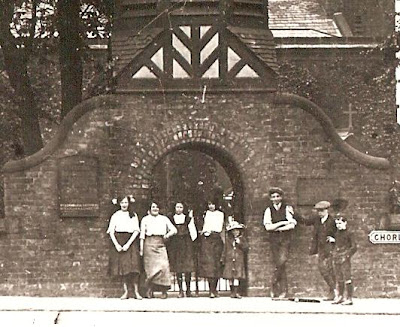It is odd how after a life time here in Manchester I am drawn back to the city of my birth and especially to those parts of south eastern London where I lived till I was 19, when I took the train North.
But you never quite take the
“child out of where they grew up” and I am drawn back by this outstanding web site,
London Sound Survey http://www.soundsurvey.org.uk/
Like so much of the way we lived it is important not only to save it but make it accessible, And this is what Ian Rawes is doing with the sounds of London.
Not Manchester, but I bet many of the sounds could have been heard from Deansgate to New Cross and up to Redbank and down through Hulme, Moss Side and south to Chorlton.
After all it was not that long ago that John Agar regularly heard corncrakes on the meadows.**
On Ian’s site you can wander across
NEW HOLOCENE: 12,000 YEARS OF SOUND
The beginnings of a new long-term project to explore likely changes in the local sound environment throughout the Holocene epoch, stretching from the end of the last glacial period 12,000 years ago to the present day.
RADIO ACTUALITY
The sounds of 1930s and 1940s London from old BBC radio broadcasts, digitised for the first time from their original 78 rpm transcription discs. Featuring street entertainers, auctioneers, fortune tellers and much more. Reproduced by kind permission of BBC Worldwide.
WATERWAYS SOUND MAP
Recordings collected along London's canals, lesser rivers and streams and made into a pastiche of the London Underground map. Man-made noise, the calls of wildlife and the restless voice of water passing through culverts, weirs and channels.
RICHARD BEARD'S HACKNEY WILDLIFE
High-quality urban wildlife recordings made by Stoke Newington- based recordist Richard Beard. This addition to the original London wildlife section features birdsong and the calls of some other animals from Abney Park, Walthamstow Marshes and elsewhere.
ALL-IN-ONE LONDON MAP
The London Map combines many of the recordings from the Sound Maps and Sound Actions sections into a single interface. Historical map layers, including First Series Ordnance Survey and Booth's Poverty Map, give a background to the modern-day sounds of London.
SOUND MAP RECORDINGS
Stereo recordings of ambient sounds all across London, including a grid series of recordings made at regular points on the map. From woodland and suburban streets to steam museums and night-time West End crowds.
THAMES ESTUARY RECORDINGS
Recordings made along the Kent and Essex shores of the Thames estuary, as well as further inland, capturing the sounds of industry, wildlife, marshland, and towns from Dartford to Sheerness.
SOUND ACTION RECORDINGS
Stereo recordings of sounds designed and made to have an impact on other people, and also of events where there's a main focus of attention. Includes traders' cries in London markets, voices of officialdom, hustlers, buskers, pub singalongs, carnivals and parades.
HISTORICAL SOUNDS AND MAPS
London history explored through its past sounds in works by Pepys, Dickens, Charlotte Bronte, Orwell and others. Accounts include how loud the London Bridge cataracts were and the sales-patter of quack doctors. Also, search for time-obliterated places with historical London maps in high resolution.
All this and updates on new a second batch of vintage BBC radio sounds, including. V-E Day celebrations, 1945. Street musicians recorded outside the Rose Restaurant in Soho, performing a cheeky song about Hitler with banjo accompaniment, Bertram Mills Circus, 1946. As well as Guy Fawkes celebrations in Camden in 1947 with children singing and asking for a penny for the guy and the South Hammersmith by-election of 1949, with the sounds of canvassing and speeches by candidates, the mayor and returning officer.
*
Corncrakes on the meadows and other memories http://www.youtube.com/watch?v=S2qfC4sRtzE
Pictures;
of the Tower of London and Tower Bridge, family and friends in Lausanne Road circa 1950s from the collection of Andrew Simpsonand Lausanne Road south east London in 1872, detail from the OS for London 1862-72, courtesy of Digital Archives, http://www.digitalarchives.co.uk/
















































